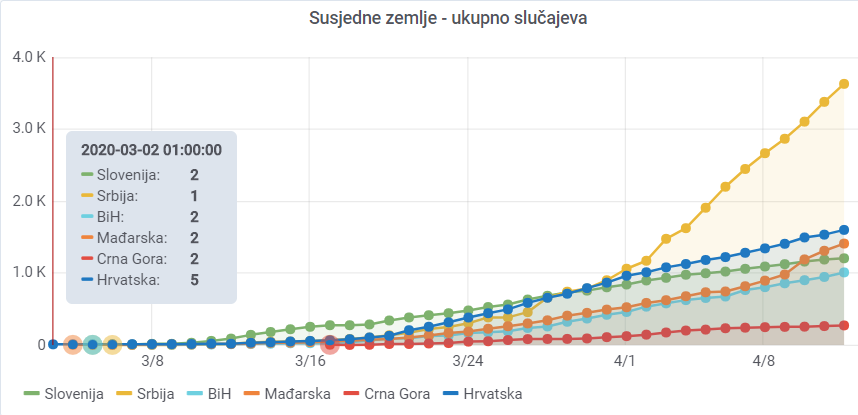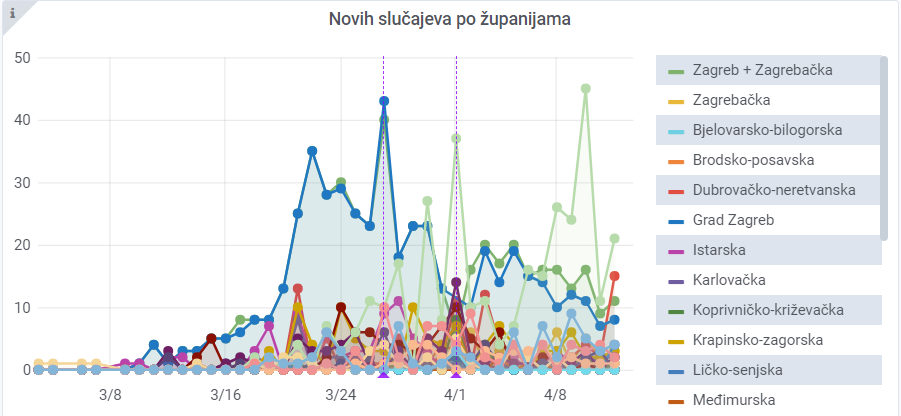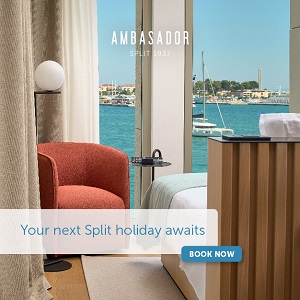Bill on Post-Quake Reconstruction of Zagreb Will Be Complex
ZAGREB, April 13, 2020 - The bill on the reconstruction of Zagreb after the March 22 earthquake will be complex because buildings in the centre of the capital are more than 100 years old, and specialists in all relevant areas are involved, Construction Minister Predrag Štromar said in a Croatian television current affairs programme on Monday morning.
"We must not and will not leave our citizens alone and that is most important," Štromar said, adding that the bill would be fast-tracked through Parliament.
He said that the Croatian Chamber of Civil Engineers, the Croatian Chamber of Architects, the University of Zagreb Faculty of Civil Engineering, as well as machine and electrical engineers, were involved in the preparation of the bill.
Asked about the time frame of the reconstruction process, Štromar said that a lot of residential and public buildings and historical landmarks had been damaged and that it would take a lot of time to repair them. He said that healthcare and educational institutions and residential buildings were a priority.
Asked about sources of funding, the minister said that these were being discussed and that first it was necessary to determine how much the reconstruction would cost. He said he counted on funding from the state budget, the City of Zagreb budget, the County of Zagreb budget, the World Bank, EU funds, donations and friendly countries.
"How the money will be spent is for the bill to define. Transparency is of paramount importance," Štromar said.
He said that intense work was under way to clear all the rubble, expressing hope that this task would be completed soon. In this context he praised the fire service for a job well done.
More news about the earthquake can be found in the Lifestyle section.
Croatian Olympic Committee President Planning Training for Top Athletes
April 13, 2020 - Croatian Olympic Committee (HOO) President Zlatko Matesa was a guest on Radio Split. In an interview with Marko Milicic, he spoke about possible economic consequences for sports and other economic activities, and also discussed adjusting to the new term of the Olympic Games.
"For all of us, the coronavirus pandemic has changed our everyday lives; it has strongly influenced all aspects of Croatian society, including sports. For weeks, nothing has been happening on the sports fields, the athletes are at home, just like other citizens, and they are listening to the recommendations of the National Headquarters. The implications are both related to sports and the economy," Matesa said in an interview with Croatian Radio.
Last week, the Croatian Government supported measures of the Central State Office for Sport, which will be converted into HRK 40 million for preserving jobs in sports collectives, and umbrella sports organizations are trying to help sports in other ways.
"Through our Office of the European Funds and the Office of the European Olympic Committees, a document has been drafted and proposed to the European Commission and on the basis of which we expect that the so-called SURE program, which also extends to Croatia, can also be used partly for sports. On the other hand, measures taken in the meantime by the Central State Office for Sports, led by Mr. Tomislav Druzak, should at least make it possible for sports to survive in organizational terms, until the competitions can begin again," said the leader of Croatian sports.
"As for Tokyo and moving the Games to next year, we have no major problems here. Scholarships to all Olympic candidates and coaches are normally paid, and I expect no problem on that side. It is essential that they all be healthy and once they can train again, to prepare for the Olympic Games in the best possible way," says Matesa.
But the question remains: When will top athletes be able to train again? Has the National Headquarters been contacted? While group training is advised against, top athletes still have to stay fit.
"We have initiated and the Central State Office for Sport has asked the Civil Protection Headquarters to consider the possibility of training certain groups of top athletes who, in their way own way, pose no threat. For example, we do not see a problem with Damir Martin and the Sinkovic brothers rowing or Sandra Perkovic training with her coach. We do not see any particular threat here, as even social distance can be maintained. We will see what the decision of the National Headquarters is and we will act accordingly," said Matesa.
You can listen to the full interview with Marko Milicic and Zlatko Matesa here.
To read more about sport in Croatia, follow TCN's dedicated page.
Dealing with COVID-19: Small Tourist Business Stories from Split
April 13, 2020 - How are small tourism businesses dealing with COVID-19 in Croatia? TCN's UNESCO correspondent on the changing realities in the two tourism businesses in Split which feed her.
It’s hard to say anything that’s not already all over the news about this unprecedented situation happening worldwide. In essence, we all follow the daily press conferences and updates on numbers of COVID-19. One thing is for sure, this Spring did not start the way any of us planned. We are all mostly working from home if we are working at all, limiting our social interactions, and avoiding leaving the house if not necessary.
This piece will look at the changes happening for two small businesses working in tourism in Split. Maybe not all similar companies are going through the same issues, but it might speak for most of them as we all face sadly the same problems. I work as a hotel manager of a small city centre hotel, and I’m the owner of a small tourist agency focusing mostly on food and wine tours. I need to admit my daily business motivation is changing almost daily in the last few weeks, and most of my work is dealing with cancellations and guests saying they can’t go on their long-planned vacation.
At the end of February, which seems like ages ago, I think most of Croatia, including me, didn’t take COVID-19 as seriously as we should have. In terms of work in tourism, I had isolated cases of canceled bookings, which were mostly for March. I even had hotel guests from Asia who were supposed to come to Split mid-March, and they asked if they would experience any racism in Split – I assured them this wouldn’t be the case. If they are ready to travel to Croatia, the hotel will be more than happy to welcome them. As you might assume, in the meantime, they needed to cancel cause all of their flights were canceled.
In the first week of March, when it comes to bookings and reservations, nothing seemed to indicate that things would escalate, or at least it seemed to be something happening far away from Split. Also, just a few cancellations, nothing more than usual. The second week of March brought a more serious approach on global and local levels. COVID-19 was declared a pandemic, and there was mandatory self-isolation proclaimed for numerous countries. From the side of the hotel business, we mostly had cancellations for the whole of March and several for April. The tourist agency had cancellations for the entire April and May – literally the entire preseason was down the drain.
The third and fourth week was just something that we all expected – almost the whole of April canceled; 30 % of May reservations withdrew, with more and more clients canceling summer dates. Luckily there were some rebookings, and that’s a small light of optimism in a sea of canceled reservations and mails starting with “We are sorry to inform you but due to the COVID-19 situation we need to cancel our reservation…” All tourism and hospitality businesses have experienced this situation in the past month.
After the first state of shock and fear due to health reasons, shock and fear transferred to the fact we are facing losing not only preseason but potentially the whole summer season, not to mention all the economic impacts on tourism and other industries. Tourism businesses are already suffering from the economic effects of COVID-19 on our lives. With pandemic dynamics and the fact there is no vaccine or cure, this is something that only logical to happen. In this situation, not many would want to travel, and if they would go somewhere, they can’t do it due to travel restrictions – I had a case of few optimistic clients, but this got canceled too. If we assume, we flatten the curve, some restrictions will be milder or removed, but people will still be cautious. At this moment, the majority of clients who had reservations till the end of June are rebooking their accommodation and tours for autumn or next year.
All this doesn’t sound like the summer we are used to having here in Split, and any other tourist destination has the same issues. Also, it’s not something we can influence or know when it will be over. As a business in this situation, we can’t do a lot, but a few things a small tourist business can do are the following:
- • Adapt your business to a new situation – work with all precautions and safety measures
- • Offer clients a flexible cancellation policy or rebooking
- • Prepare the prices and promotions for summer months and postseason - by some predictions this could be the time when we could expect fewer travel restrictions
- • Be ready to offer discounts and change price strategy
- • Be present but not aggressive with marketing as this is not the time to sell vacation
- • Be kind and understand clients and answer quickly to inquiries
- • Be in touch with partners agents and hotels – they are going through the same stressful situation
- • Analyse your current business situation and project your future cash flow and income
- • Keep your staff if you can and be honest with them about the situation
- • Apply for state-supported or other measures that could help your business
When this is over, inevitably, there will be people willing to go on vacation, and with some preparation now, we could attract them first to the destination and then to our business. Tourism, although it is the first to be affected by negative impacts it will be the first back on its feet – now we need to deal with preserving our health as well as the health of our families. As everything this will be over at some point – we need to keep sane, safe, and follow the instructions we have from health officials.
If you would like to dream a little about your next Split holiday, here is what Filipa's agency specialises in.
For more on being prepared for the post-corona reality, Zoran Pejovic of Paradox Hospitality has written an excellent series for TCN.
Green Heart of Umag: 50 Crepe Myrtle Trees Planted in Humagum Park
In the midst of the world's media (including TCN) being gripped by the coronavirus pandemic, every little bit of positive news is welcome. While a lot of encouraging headlines are drowned out by concerning articles about coronvirus, be they about public health or the precarious state of the global economy, there are still some that are enough to make you smile. One such story is happening in Umag's beautiful Humagum park.
Istria, while still less talked about than its southern cousin Dalmatia, is well known for its sheer beauty. This region of Croatia boasts all the gorgeous architecture, history and coastline of Dalmatia, coupled with a booming wine growing culture and lush, fertile greenery.
On top of the wine culture for which it is recognised, Istria places a lot of emphasis on ecology and taking care of the environment. The planting of trees in Umag's popular Humagum park is just another example of Istria's care for its surroundings and the nature which contributes so heavily to its beauty and popularity.
As Morski writes on the 13th of April, 2020, last week, employees of the city company Komunela d.o.o. planted new Crepe myrtle trees, known for their gorgeous pink blossom along Umag's picturesque waterfront.
A total of fifty new seedlings of this wonderful plant will adorn Umag's beautiful Humagum park and dominate this open space with its pink flowers as the warm spring weather approaches.
This is a new phase of landscaping the so-called green heart of the city, which will certainly add to not only the beauty of the place, but also contribute to providing some much needed shade during the hot summer months.
Make sure to follow our dedicated lifestyle page for more. If you're interested in official and unofficial ways in which Croatia works to protects its environment, give Total Eco Croatia a follow.
Meet Croatia's UNESCO World Heritage Sites: Plitvice Lakes National Park
April 13, 2020 - Continuing her look at the UNESCO treasures of Croatia, Filipa Marusic enjoys some blissful self-isolation at Plitvice Lakes National Park.
This article will take a look into probably the best-known UNESCO World Heritage from Croatia – Plitvice Lakes. Plitvice Lakes is the oldest and largest National Park in Croatia. Its location is between Mala Kapela mountain in the west and northwest and Lička Plješivica mountain in the southeast. It is covering two counties – Lika-Senj county 90.7% surface and Karlovac county 9.3% surface, and the total park surface is 29 630,77 ha. The Plitvice Lakes became a national park on April 8th, 1949, and was inscribed to UNESCO World Heritage List on October 26th, 1979, due to its outstanding universal value. Its outstanding universal value lies in the travertine (tufa) formation process, which, as a result, has travertine barriers and created the lakes, caves, and waterfalls in the Park.
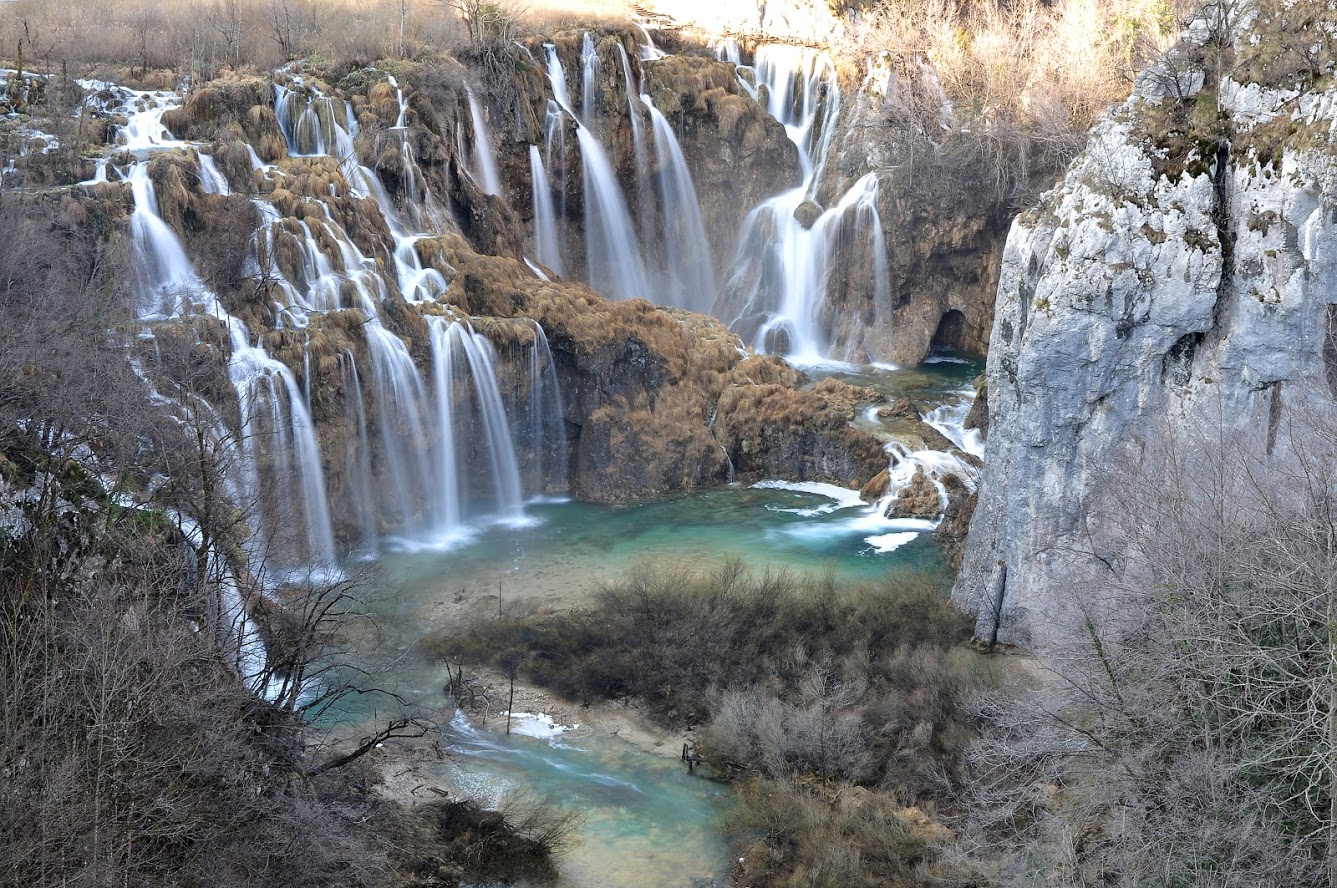
The national Park is mostly forest, and the lakes cover just under 1% of the total park area. Forests are the home many rare and endangered species. There is a total of 16 lakes that cascade one into another. Lakes are divided into Upper and Lower lakes based on their geological structure and hydrogeological conditions. Twelve lakes form the Upper Lakes: Prošćansko Lake, Ciginovac, Okrugljak, Batinovac, Veliko jezero, Malo jezero, Vir, Galovac, Milino jezero, Gradinsko jezero, Burgeti, and Kozjak. These lakes have a base of dolomite rock. They are larger than the Lower Lakes and have a rugged shore. Four lakes form the Lower Lakes: Milanovac, Gavanovac, Kaluđerovac, and Novakovića Brod. The Lower lakes were created in the narrow limestone canyon, and they have a steep shore. These lakes end with the Sastavci waterfalls where the Korana River springs under the base of falls. The biggest lake is Kozjak, followed by Prošćansko lake. The origin of these lakes goes back to about 12000 to 15000 years ago.

The Plitvice Lakes are part of the Dinarides karst region, and it is one of the most significant karst landscapes in the world. This kind of landscape is primarily made up of carbonate rocks such as limestone and dolomite rocks, which are sensitive to chemical and mechanical influences, as well as the influence of tectonics. The water with carbon dioxide goes through cracks in carbonate rock, and it leaves its trace in the rock and makes different karst forms on the land surface and underground, such as funnels, depressions, karst fields, towers, columns, caves, and pits. There are 114 speleological structures in the Park, out of which are 72% pits and 28% caves. Most of the structures are smaller, and the total length of all structures is 1664 m, and the overall depth is 2251 meters. Most of the water surface is cascading into 16 lakes of different sizes, which are created by the biodynamic process of travertine barriers. Water covers less than 1% of the territory of the park, and this makes 22.95 million cubic meters of water. As the travertine barriers grow, the water levels rise and increase the volume of water in the lakes. The lakes have connecting waterfalls between the lakes.

Travertine barriers formation
The travertine barriers have an ongoing growing process, and the biodynamic structures are changing all the time, and it changes the appearance of the lakes and the waterfalls. Travertine or tufa, by definition, is "Tufa is a hollow, porous rock created from the deposition of dissolved calcium carbonate in the water by plants, algae, and mosses." The second definition is: "Tufa is a product of calcium carbonate deposited at temperature conditions near to the ambient temperature, and often contains the remnants of microphytes and macrophytes, invertebrates and bacteria."
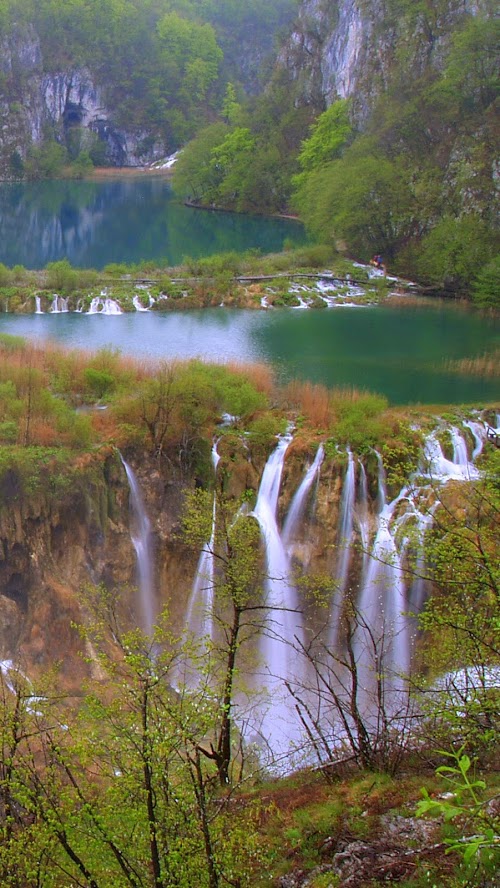
The water of the Plitvice lakes is over-saturated with dissolved calcium carbonate in the form of calcium bicarbonate. At the travertine barriers, calcium carbonate is extracted from the mineralised water in from crystals, which accumulate on the surface. The travertine forming process is dependent on specific algae, various bacteria, protozoan, and other microscopic organisms. These organisms are a living community developed on rocks, plants, mosses, and objects immersed in water. The calcite microcrystals adhere to the algae and bacteria secreting substances. These bonded crystals represent crystallisation sites around which calcium carbonate will continue to accumulate, and it will form travertine barriers. The moss and other micro and macrophytes are common around travertine barriers. The moss is quite common – some become petrifies in tufa making process, and some continue to grow. The travertine forming process goes back to the geological part during periods with a warm and humid climate, which is similar to climate nowadays. The age of the active travertine barriers is estimated between 6000 and 7000 years, which corresponds to the theory the tufa began its process following the end of the ice age. In the flanks of today's streams and sources of lakes, there were paleobarriers of higher altitude and older age. Analyse dated the age of 250 000 – 300 000 years (Midel-Riss interglacial) and 90 000 – 300 000 (Riss-Wurm interglacial).
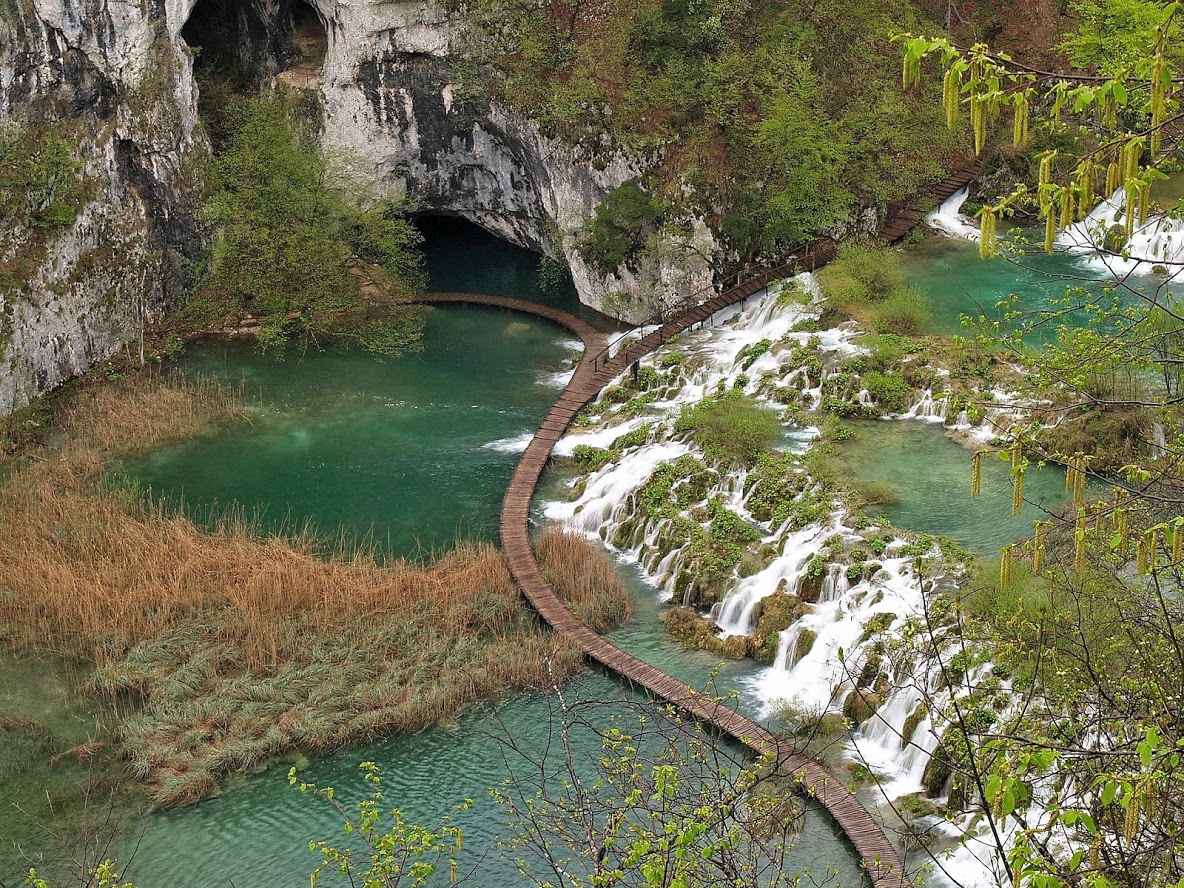
Analysis of the age of the active barriers and lake sediments show the average annual deposition rate of lake sediment is about 17 times slower than the speed of travertine barriers growth (about 13.5 mm) – this increases water level. Each lake barrier has its growth dynamic, and some grow faster another slower. Sometimes the downstream barriers grow faster than the upstream obstacles, and this way, they submerge the upstream barrier and two lakes from one lake. For example, on the location of Kozjak lake, there were 400 years ago two lakes and were separated by travertine barrier and 40 m high waterfall. The travertine barrier at the end of Kozjak lake grew faster than the barrier separating it. This way, the water level raised, the lake level increased and covered the waterfall, and the barrier and merged two lakes into one. This process created the lake as we see it today - lake Kozjak the biggest lake of the Plitvice lakes. The travertine barrier growth is affected by changes in physicochemical and biological factors that are important in the travertine growth process. It can be damaged with mechanical processes and is affected by water flow. This way, travertine barriers stop growing or can break if trees fall or ice melts after winter.
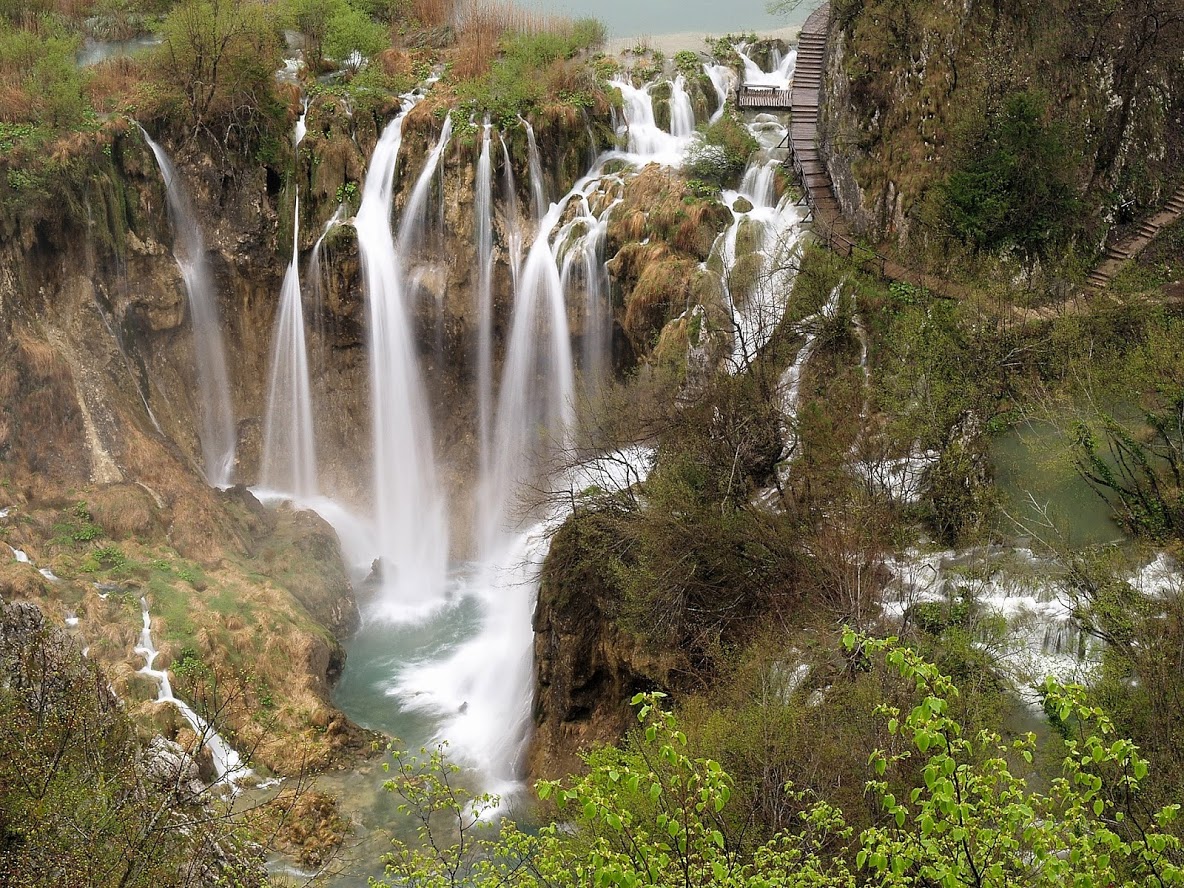
Biodiversity of Plitvice Lakes
The Plitvice Lakes national park has rich flora and fauna. The fauna is diverse due to the preservation of natural habitats, but biological diversity researched is not entirely researched. There are 259 species of vertebrates about which we have enough information, while numerous invertebrate species are not sufficiently studied except for the limnological researches in aquatic habitats. From the all researched species, there is a significant number of rare and endangered species that are included in different flora protection directives and conventions. All these species are evidence of the diversity and specific natural surroundings of the Park area. In the insect group, there are various species, and just in the butterfly group, there are 321 different species. There are only 321 of butterflies. Several butterfly species are listed as endangered. Other insects include caddisflies, dragonflies and other, out of which some are endangered, and they show the connection between water and land ecosystems and are essential bioindicators. In the water ecosystem, there are several crayfish endangered species as well as various fish species even though the fish structure changed during years. There are 14 species of each amphibian and reptiles – there are six protected amphibians, and ten protected reptile species of them are protected. The Park has 168 bird species. Bird species include woodpeckers, owls, gazebos, and birds of prey, which are proof of the excellent quality of forest habitats – there is about 76% of Park area covered in forest. Grasslands and lawns cover 23% of the Park area and are habitats and nesting locations for several bird species. There is a total of 37 endangered bird species and 76 protected bird species. There are 50 mammal species out of which 22 protected bat species. There are large carnivores like brown bear, grey wolf, lynx, and otter, which are all protected and endangered species and show quality and conservation level of the natural environment in the Park. These species look for secluded areas where there is enough prey, shelters for rest, and upbringing the cubs. There is an indigenous breed in the park area - Lika Pramenka sheep – the total population of this sheep species, is around 400 heads. This sheep herd is found in the mountain regions on natural pastures rich in vegetation but under harsh winter conditions. This breed is adaptive and resistant and gives meat and milk.
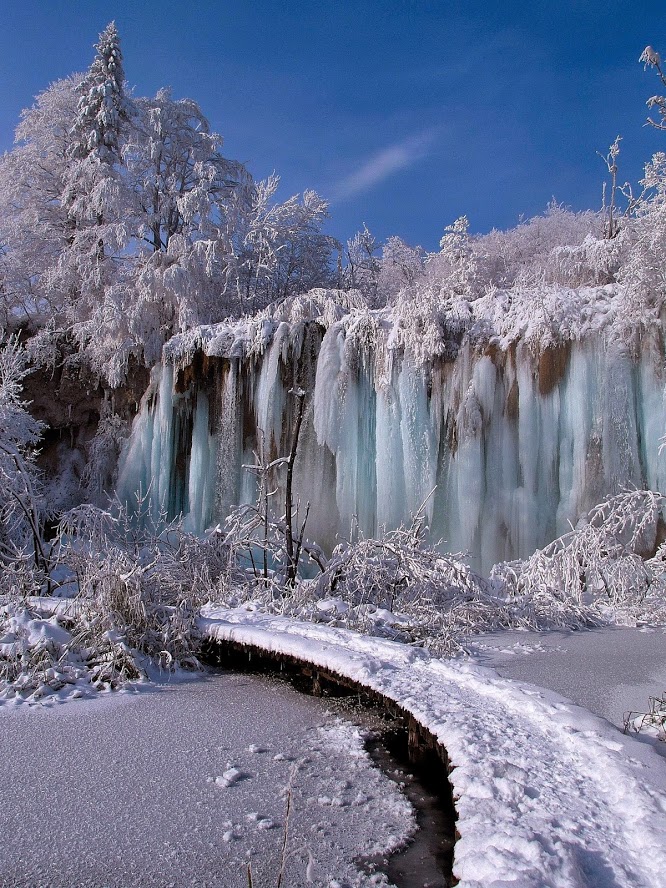
At the moment, there are more than 1400 species and subspecies of plants, and they equal to 30% of the entire Croatian flora. The diversity of plants is due to a specific geographic location. Plitvice Lakes is located just 55 km air distance from the sea and in the inland of Velebit mountain and on slopes of Mala Kapela and Lička Plješevica at an altitude of 369 – 1279 m. This area has different geomorphological, climatological, and ecological factors. In the relatively small park area, there are plants from different areas ranging from the Mediterranean, Mediterranean-Atlantic, Illyrian, Balkan, Carpathian, Eurasian, Circulatory, Boreal, and others. The number of endemic plant species is just 1,7%, but there is 4,64% of endangered plant species. There are 60 species of orchids and three species of carnivorous plants. The park has plenty of fungi and lichens, which have a role in the functioning of terrestrial ecosystems. There are more than 800 fungi species in the Park.
Grasslands habitats (meadows and pastures) are essential for the diversity of flora and fauna in the Park. In the past, people needed these spaces for livestock and food. In this way, they increased the biodiversity and the stability of the ecosystem by practicing a traditional way of life. As fewer and fewer people live in the area and the traditional way of life is abandoned, there is a potential problem in the survival of grassland and heaths flora. Heaths are also in the park area and represent grasslands developed in relatively dry habitats. The Park has bog habitats too – they date back to the glacial period – these are small areas highly dependent on microclimate conditions. Underground habitats and species living there are not sufficiently researched and are under constant threat from visitors, illegal waste disposal, and polluting water.
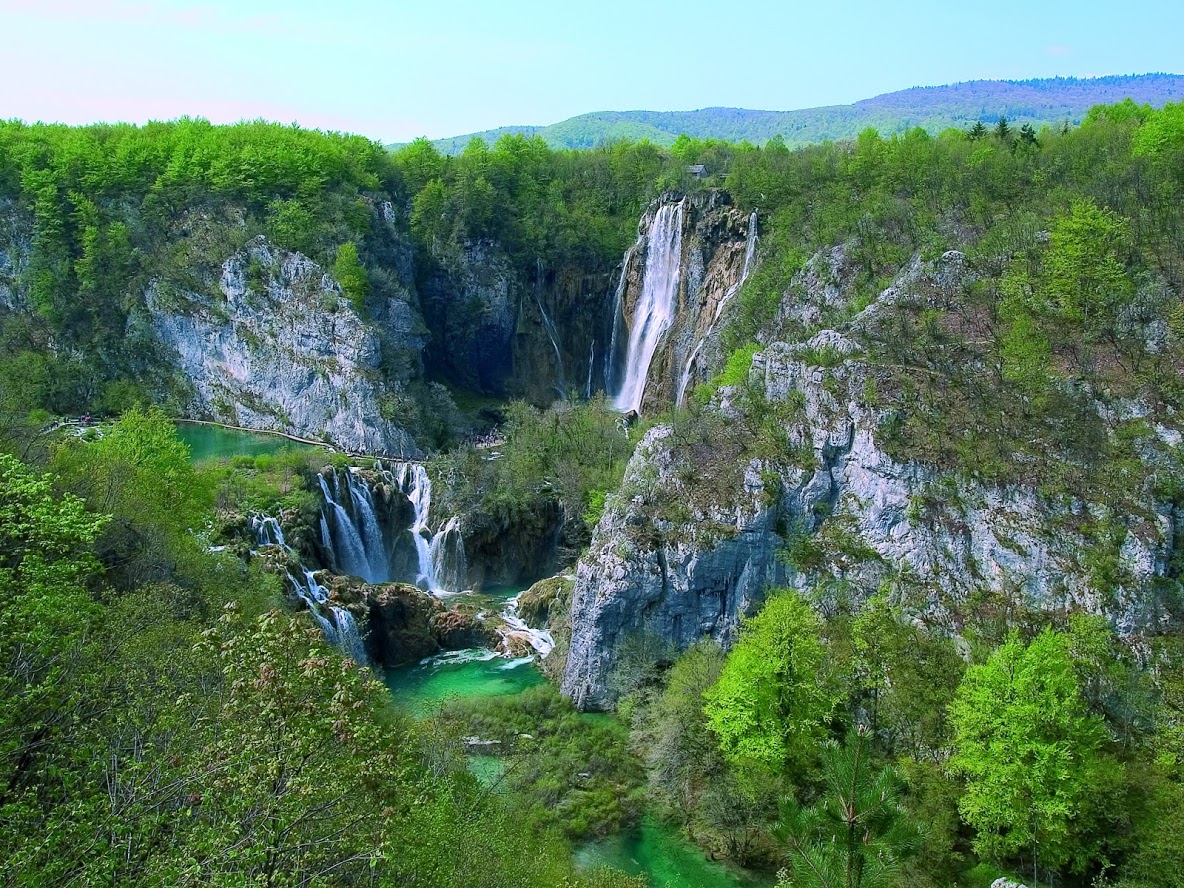
The location of Plitvice Lakes National park gives the area a moderately warm and humid climate. The vegetation is defined by altitude, terrain characteristics, but also geological background, soil type, and way of using it. The geological base is limestone and dolomitic rocks. Forests cover ¾ of the park area and are ranging from shrubs to rainforests. There are different forest zones – there is a predominant beech forest zone and beech-fir zone. There is also azonal vegetation like willow, black alder, black hornbeam, common pine, spruce forest. As part of the beech forest, there is a rocks community developed on stone blocks. There are several forest communities within the park area. They include alpine beech forest, beech-fir forest, common beech, and hellebore forest, spruce forest with hellebore, silver pine forest with black hellebore, hop hornbeam with winter heather, hop hornbeam forest and thicket with autumn moor-grass. The forests are habitats for already mentioned forest flora and home for wildlife species. They have an essential role in preventing soil erosion and affect climate and hydrological conditions as well as contribute production of oxygen and storing carbon.
The biodiversity of the aquatic ecosystem is valuable for the Park, and there are three different habitats in aquatic ecosystems. The species living the water need good water quality, and their presence indicates the quality of water and conservation of these habitats. Wetlands also represent essential habitat in the Park.
History and culture of the area
Plitvice Lakes and the surrounding areas stand as proof of human presence since prehistoric times. The area is rich in water, forests, flora, and fauna, as in natural shelters that allowed humans to live in this area. The area is between routes and roads from continental to the Adriatic region. First inhabitants from prehistoric times were Iapodes, from 12th to 1st century BC, when Romans started to rule the area but lived in cohabitation with Iapodes. In the medieval times, Croatian settlers mixed with Romanised Iapodes. There is also heritage in the form of medieval fortresses and churches. By the end of the 14th century, this area suffered from Ottoman invasions and was the location of constant warfare. After Ottomans, the Vlachs settled in the area. This area represented a border zone with the Hapsburg Monarchy, where there were ongoing conflicts. At the end of the 17th century, Lika was free from Ottoman rule, and this became the Military Frontier (Vojna Krajina). When Vojna Krajina came to an end in the 19th century, there were no more military conflicts in the area. Although there are a lot of different archaeological localities, they aren't systematically researched or used in tourism purposes. The best-explored example is Krčingrad grad located on the peninsula between Kozjak lake and Gradinsko lake, where the was evidence of external defensive walls and two towers – one rectangular and large triangular.
Plitvice Lakes had the first accommodation facility in 1862 on Velika Poljana. After that, private accommodation facilities opened. Finally, the first hotel was built in 1896 called Hotel Plitvice, which got destroyed in a fire in 1939. By the end of the 19th century, there were also several roads connecting Plitvice lakes with the area. The beginning of 20th-century infrastructure was built too in the form of mills, sawmills, small hydropower plants, and various inns. Two world wars stopped any development of the area, and these old buildings don't exist nowadays. After the Second World War, the area started new development, and it was proclaimed a national park in 1949.
As any protected area, this area also needs to find a balance between natural processes in the area and infrastructure for visitors. The buildings in the Park should be adapted to the surroundings and shouldn't stand out. The example of this kind of building is Kozjak restaurant from 1949. which adapted to the national park area, and it is now a protected cultural structure. New hotel Plitvice from 1958 also was designed to fit into the forest environment. It is still in use and is a protected cultural building. In 1954 there were three forest lodges built as well as houses for accommodation for park staff. In the same area, there were several facilities to make it the administrative and tourist centre of Plitvice Lakes.
In the village Korana, along the northern border of the Plitvice lakes, there is a water mill and sawmill. In essence, these are rare examples of preserved traditional construction and the use of energy potential of the water. There was a hydropower plant on Burget lake, but it is not in use anymore. In several settlements in the Plitvice lakes national park, it is possible to see an example of the traditional architecture and way of life. The best examples are in villages Korana, Gornji Babin Potok, Donji Babin Potok, and Vrelo Koreničko. The residents mostly work in agriculture and tourism, and when you visit, you can buy homemade products. These are also protected cultural landscape of the Plitvice lakes national park.
Scientific development
The scientific and natural value can is visible in the fact that there is an almost 170-year long tradition of scientific research in the area. The first studies started in 1850 with the primary limnological depth measure and geological research. In 1893 the Society for the beautification of Plitvice Lakes and its surroundings was established, and it allowed research to continue.
The best-known researcher of the Plitvice lakes is Dr. Ivo Pevalek, who was the one to discover the aquatic mosses and algae were key factors for the formation of the unique geomorphology. He presented the fundamental phenomenon of the creation of travertine barriers. He was one of the strongest supporters of the decision to proclaim the Plitvice lakes national park. Before the area became national Park, the researchers worked as individuals and were self-funded. After the area became National Park, there was space for multidisciplinary studies and financial support by the national park administration. The vital contribution to Plitvice lakes research dates back to 1961 when the Plitvice Lakes got its biological station. The work here was continued in Ivo Pevalek scientific station opened 1975. These scientific stations had an essential role in initiating, intensifying, and coordinating scientific research and preparation for documents for the inscription of the Plitvice lakes on the UNESCO World Heritage List. The national Park published around this time the first issue of the Plitvice bulletin, which is the publication, which informs the expert public on the results of scientific research. There are also several scientific publications and organises scientific symposiums. During the Homeland war, the scientific work was interrupted. Still, in years after the war, there were numerous projects, and the work of scientific station is continuing in new Dr. Ivo Pevalek Scientific Research Centre. There are several ongoing water ecology projects as well as monitoring projects related to water and geology.
Visiting the lakes
The Plitvice Lakes National Park offers visitors seven different routes to tour the lakes and four hiking trails. The Park is open year-round, and all visitors must follow the instructions listed on the information board and keep to the marked trails and avoid leaving trash behind them. Some behaviour is not allowed in the National Park, and there are recommendations on how to prepare for the visit.
Strictly forbidden:
- Picking the plants or taking any "souvenirs" of natural origin
- Feeding the animals
- Swimming in the lakes
- Throwing away the waste along the trails or elsewhere, except in the garbage bins
- Drift away from the marked trails
Highly recommended
- Wear appropriate clothing and footwear
- Bring adequate rain and sun protection (umbrella, raincoat, sunglasses, hat, sunscreen – depending on the season)
- Check the weather forecast before coming to the Park
- Be sure to check the information listed on the website about the length of specific trails, to ensure that you have enough time to complete the desired tour
- During your stay in nature, keep food and drink in closed containers and do not leave the food and other waste in nature
- Throw away the garbage at the designated disposal site
- Before eating wash your hands
- Do not touch the nests and other places you notice during your visit
To see all the visiting options check the web app with different suggested park routes which include hiking, boat ride and train.
SOURCE (Text and photos): UNESCO, Plitvice Lakes National Park - Arhiva Nacionalnog parka Plitvička jezera
Croatian Daily COVID-19 Testing Stats, Regional Curves & More: Stunning from Velebit.Ai
April 13, 2020 - A fabulous new addition to those looking for the latest and most details COVID-19 stats from Croatia. It doesn't get more detailed that the info put out by Velebit.ai. Does it?
It is just 35 days - and yet several lifetimes ago - since TCN produced the first corona map of Croatia on March 9, 2020.
I like to look at it from time to time - things didn't seem too bad back then, did they?
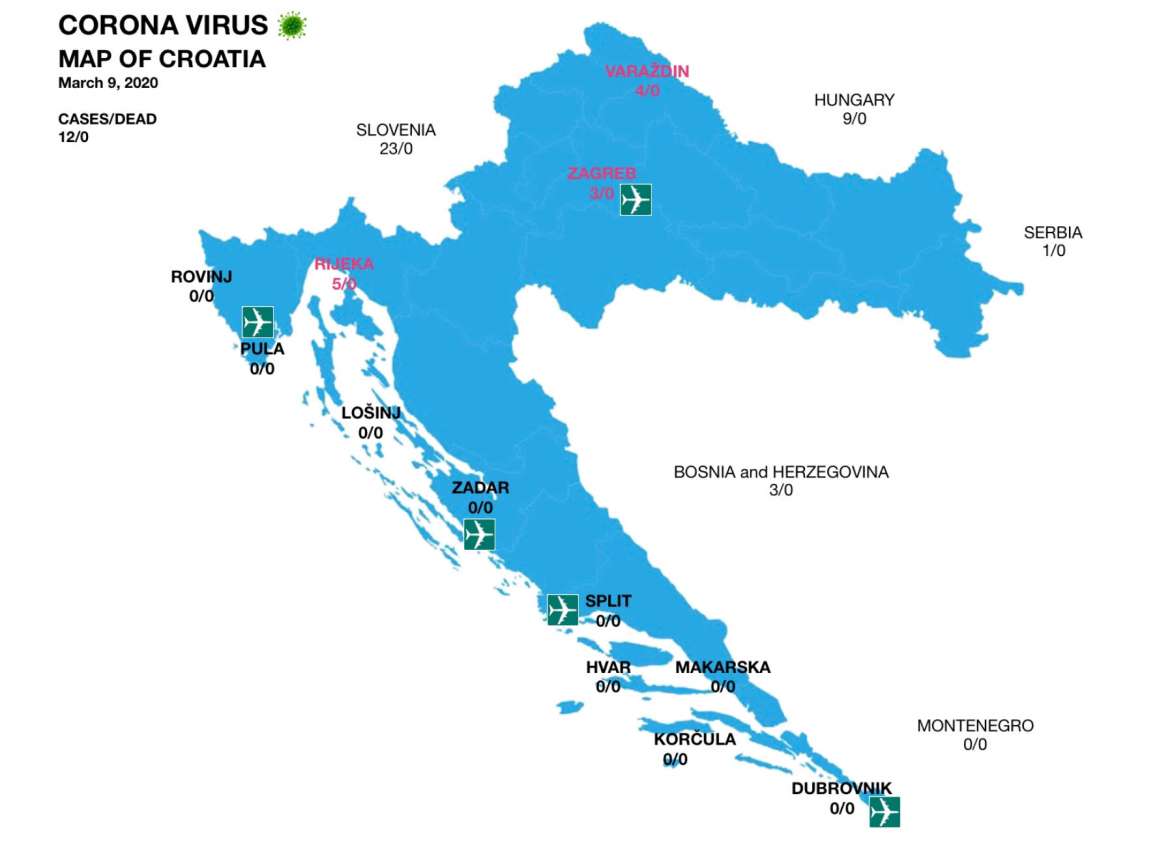
The response was huge, and it is the second-most popular article on TCN this year after the Zagreb earthquake.
And, as with most of the good stuff on TCN, the first corona map of Croatia had nothing to do with me.
"You know what is hot right now?" asked my clever Venezuelan colleague, Gustavo Vilera. "Corona maps. People want to see where the cases are. There is no corona map of Croatia."
Since I have no idea how to add text to a picture, the likelihood of me designing a corona map was less than zero, but my wife is much better at these things and most other things as well.
Working on her iPad and without any sophisticated software, she produced a very credible effort, which she updated daily for us until Index and then Koronavirus started doing theirs.
Since then of course, Index, then Koronavirus.hr and many others started adding their own statistics, maps and charts. And with much bigger resources and access to information than TCN, the information flow has improved considerably.
And now THIS!
Someone sent me an email about the COVID-19 info available via those clever Croatian AI chaps over at Velebit.ai, and it sits unread like 487 other messages I need to get to when I get to it. But then someone mentioned it to me again yesterday, and I took a look. Wow!
Corona stats junkies, we have just filled your day. Really great info on a number of things previously unavailable, such as how many tests is Croatia conducting, how do Croatian curves compare to those in the region (wouldn't that sentence have a different meaning in a different era...), and how are the cases developing by region in Croatia.
All that and MUCH, much more over on the Velebit.ai coronavirus page.
HND Asks State Leaders to Condemn Attacks on Journalists in Split
ZAGREB, April 13, 2020 - The Croatian Journalists Association (HND) said on Sunday it was shocked by this morning's attacks outside a church on Dalmatinski Portal journalist Živana Šušak Živković and N1 camerawoman Ivana Sivro, asking that the state leadership clearly condemn them.
The attacks occurred at about the same time, first on Šušak Živković, who was recording a gathering of believers at a church in a Split suburb, the HND said in a press release.
After she was roughly pushed away, which is clearly visible in a video, the mobile phone on which she was live streaming the gathering was destroyed, then her arm was pinned with the church door, for which she had to seek medical assistance and report the case to the police, the HND said.
Shortly thereafter, Sivro was attacked outside the same church and this too was recorded, the HND said, adding that a video shows a man in a car rushing towards the woman, slowing down and hitting her camera with his hand.
The HND noted that prior to the incidents the church priest, Josip Delaš, insulted the journalists and that according to witnesses, the crowd hurled insults at the two women as well.
The HND asked why the police were not there and why the law did not apply to all, saying it was difficult to believe that the police did not know that Easter Mass would be held in that church despite a ban because of COVID-19.
The HND said that although the attackers were arrested, Interior Minister Davor Božinović condemned the attack and the Split-Dalmatia Archdiocese distanced itself from Delaš, that was not enough.
The conduct of the Church in recent days was irresponsible and top state officials are keeping silent about attacks on journalists, the HND said, adding that this was the third attack on women journalists in Split recently.
In Croatia, which is chairing the EU, there is evidently a hunt on journalists and a lynching atmosphere in which journalists are to blame for everything, the press release said.
In recent years such messages have come also from the highest Church dignitaries and state officials, which is unacceptable, so the HND demands that the state leadership clearly condemn the latest attacks, the press release said, adding that the HND would notify its foreign partners.
More news about journalism in Croatia can be found in the Politics section.
Austrian Daily Writes Wistfully About Croatian Island of Šolta
ZAGREB, April 12, 2020 - Austrian daily Kurier on Sunday wrote about the Croatian island of Šolta as the second home of Austrian tourists who, because of the COVID-19 epidemic, could not visit it now.
"Our longing has a name, the small Dalmatian island of Šolta which rises to the surface from the infinite deep sea, and because of the coronavirus it is uncertain when it can be visited again," Kurier said.
"The small Croatian island of Šolta between Split and Brač used to be our second home for two to three weeks at the end of summer, and the trip to the island was a special experience and ritual," it added.
Some Austrians booked their holidays on Šolta this year when people did not know about COVID-19. But the outbreak has changed everything and no one knows when normal travel will be restored.
"For now, coronavirus is forcing us to stay home, but this only increases the burning desire to live soon as we lived before," Uwe Mauch wrote in Kurier.
He says Šolta is full of beautiful olive groves, gardens with lemon, orange and fig trees as well as fragrances of lavender, rosemary, laurel, immortelle and other Mediterranean plants.
A unique environment and the smell of the sea, the relaxed and nice southern population, their songs, dishes, wines, customs, walks through orchards and olive groves, and local honey are just some of the specificities of Šolta, Mauch wrote.
It would be beautiful if at the end of the endless tunnel of restrictions caused by coronavirus, it would be possible to visit Šolta again at the end of this summer, he added.
According to the Austrian health ministry, 13,945 Austrians are positive for the virus and 350 have died.
More news about Šolta can be found in the Lifestyle section.
COVID-19 Repatriation Stories: Singapore to Mauritius, South Africa & Zagreb
April 13, 2020 - With the sudden lockdowns and flight restrictions last month, there were many desperate COVID-19 repatriation attempts. Read how Bojan Mirkovic's idyllic 3-week African holiday from Singapore turned into a very different 3-week African experience ending in an unexpected return to his homeland.
From the TCN inbox on Easter Sunday.
Spring break is a time of the year when we choose to travel to destinations at the top of our bucket list. For Spring break 2020 plan was to visit the African continent finally. Our three-week itinerary originally was:
Singapore ➡️ Mauritius ➡️ South Africa (Cape Town) ➡️ Namibia ➡️ Zambia ➡️ Botswana ➡️ Zimbabwe ➡️South Africa (Johannesburg) ➡️ Singapore.
I spent at least a hundred hours last November by computer to properly plan this entire trip, choose destinations, make all the visas and book all the flights, hotels, rent-a-cars, day trips...(I considered it more like a project than a trip).
By the time we are heading to Mauritius, the situation with COVID-19 in Singapore was stable, and life went on as usual. Also, at that time, there was no Coronavirus in the Southern part of the African continent at all. All the countries we were planning to visit had zero cases. Africa seemed to be spared by this enemy.
Of course, we were all the time closely monitoring what was going on with the virus in our home countries, in Europe in general, and other parts of the world where numbers of confirmed cases were growing rapidly. So we made plan B...and C...just in case something went wrong.
We landed safely in Mauritius, enjoyed exploring a paradise island, and really had a blast on gorgeous beaches and resorts around the country. After a couple of days, the situation started changing fast. The virus came to the island. Apparently, two tourists that came from the last cruise ship had no symptoms but were carrying the virus. They spread it to their local tour guy, who went to a local funeral....numbers started growing fast, and the country went into lockdown. ??
We wanted to come back immediately to Singapore and cancel the rest of our African adventure. But that wasn't possible anymore. At the same time, the situation with COVID-19 in Singapore wasn't stable anymore. There was a spike, and everything changed, so the government implemented a lot of new measures to fight the spread of the virus. One of those was that all foreigners returning to Singapore must get approval first from the Ministry of Manpower before returning. We immediately started working on it and submitted all the forms. But our approval was rejected. Too many people were trying to get back. We kept trying....did it all over again every single day, wrote to the Ministry of Manpower, tried with the appeal as well. But no - it was still rejected.
Meanwhile, we managed to leave Mauritius with the last possible flight! The government was shutting down not just restaurants, bars, and hotels, but the airport as well! The destination was Cape Town. And it seemed great. Anyway, we had visas, booked accommodation, life there was going normal, and it was still a period before the crisis. Just like on Mauritius the week before, we had a couple of days to enjoy the new destination. Great city, a lot of things to see and do, perfect weather, great restaurants....all good...we had time to go to the Cape of Good Hope, spend some time with African penguins, explore the city,...but then, the president announced lockdown of South Africa for three weeks and gave people two days to prepare for it! Again, restaurants, bars, hotels, airports, everything - shutting down. Only pharmacies and supermarkets would remain open.
Meanwhile, all these days, we constantly kept applying to get approval to come back to Singapore.
It took a lot of time, money, and effort but again we made new plans for leaving Africa. We even had three plane tickets at the same moment!
Second - we also had a ticket to go to Windhoek, Namibia, as part of our original itinerary. It was just before the lockdown of South Africa... But we were not able to board that flight either. Why? Namibia, that same day went to lockdown as well!
The third ticket was - to Zagreb, Croatia. The situation there at that time was chaotic. In addition to the fight with Coronavirus, my hometown was hit by several strong earthquakes! As we had no option, we decided to fly to Croatia.
So, between choosing to get stuck in Namibia, Dubai airport, or South Africa - we decided to stay in lovely Cape Town. We love the city. ??
Lockdown started. Luckily, we had fantastic accommodation - a beautiful villa with a nice backyard, swimming pool, excellent breakfast, and situated in the best part of the city. We chose this over any hotel as we wanted to stay at some nice and clean place with fewer tourists to reduce the risk of getting a virus. So we were ready to pay more for it. When we were booking it, we had no idea it was going to be for so many nights. The owners reduced the price as they knew we had no choice and what the situation was. In such a lovely place, days were passing fast and we had a great time. Many people told us that this country is not a safe place and that due to lockdown and events from the past, we can expect anything. Several of them stated that it would be a great thing to get a gun as we could expect many robberies and riots when people in the slums become hungry and desperate! It was actually the opposite; we felt safe and sound during our entire stay.
When the South African president announced lockdown, we contacted the Croatian embassy to register there so they knew that we were in SA, on which address exactly and to leave contact details in case something went wrong. The embassy in Pretoria was very responsive and helpful, we were in contact every single day. Meanwhile, the South African and German governments concluded an agreement about COVID-19 repatriation flights for German tourists and other European Union citizens. Thanks to the Croatian embassy, a few days later, on the 13th day of lockdown, we found our seats on a flight to Frankfurt! After three weeks in total in Africa, we were now in Europe. From Frankfurt, we took the only flight left operating to Croatia! This entire trip with the COVID-19 repatriation flight is an interesting separate story in itself, but about that some other time. This one is already long enough for Easter morning.
So here we are now - after a lockdown in Mauritius, lockdown in South Africa, we are doing a two-week self-isolation in Croatia.
We wanted three weeks in Africa - we got three weeks in Africa! (Be careful what you wish for)!
I haven't been home for the last five years, so after all of this, I am still smiling and feeling great! It was a trip we for sure will never forget!
Also, during the entire trip, we were 100% healthy. We are having 36.6
Happy Easter!
Festival Director Zoran Maric Says INmusic in Zagreb to be Postponed
April 13, 2020 - INmusic festival director Zoran Maric talks about the fate of the 15th edition in Zagreb.
The coronavirus pandemic is affecting the global music industry more severely than initially expected. The ban on public gatherings continues, and it is still not possible to determine or predict when we can enjoy concerts of any kind again, including festivals, whether local or foreign.
Many music festivals around the world have already confirmed new dates - some will be held in late summer/early fall 2020, while some have skipped this year's edition and already announced the same program for 2021.
INmusic, one of Croatia's biggest music festivals, announced a truly impressive line-up this year, including The Killers, Beck and Deftones, who are just part of a fantastic program scheduled for June 22-24, 2020 at Zagreb's Jarun.
Sound Report contacted the INmusic festival director, Zoran Maric, who explained the current situation and organizational challenges they are facing:
"The organization of the INmusic Festival is making every effort to delay the festival when the public health situation allows. Tickets purchased for the 15th INmusic Festival will, of course, be valid for the new term.
In a pandemic situation in which everyone loses, we strongly believe that delaying the festival for a new term is the fairest and safest solution for everyone involved - the audience, musicians and festival organization. If there is no other option, the ultimate option is to cancel the festival, which in this context means that the festival will no longer exist," said Maric, emphasizing that the global music industry is currently facing huge losses, but the health and safety of every visitor is still a top priority.
"In this way, we would like to thank everyone who, by staying in their homes and practicing physical distance, has contributed to the good and controlled epidemiological picture in Croatia, to protecting our own health and that of our loved ones, and equally important, the stability of our health system. And this crisis, like many others before it, will pass, and only in safe conditions can we expect and look forward to returning to a better state of everyday life, which will include international music tours and all other cultural and tourist facilities that we, unfortunately, lost in 2020."
Jutarnji List reports that if INmusic is canceled due to force majeure, there will be no refund. "The INmusic Festival, as an independent festival, has stated in festival rules from the beginning of the event that if the festival is canceled due to force majeure, no refund will be possible for the tickets purchased," they said.
They believe that in the event of cancellation due to force majeure, "everyone involved, therefore, the bands and the organizers and the audience, necessarily bear their share of the loss, which is nevertheless minor for the audience compared to the losses of the bands and the organizers."
This year's INmusic at Zagreb's Jarun was scheduled to feature The Killers, Beck, Deftones, The Lumineers, Nick Mason's Saucerful of Secrets, Belle and Sebastian, Rival Sons, Gogol Bordello and others.
INmusic is in regular contact with all the performers and says there is a high level of understanding of everyone, from the agencies of the bands, the management, and the bands themselves to the organizers.
"Everyone involved in the realization of such an event is expected to receive the same level of understanding by the audience, precisely because every individual on the planet is somehow affected by the pandemic and its suppression measures," they note.
They expressed the belief that this understanding will enable the 15th INmusic Festival to take place, if not in June this year, then at a time when the public health situation will be stable and the threat of the uncontrolled spread of the infection will be overcome.
To read more about lifestyle in Croatia, follow TCN's dedicated page.

